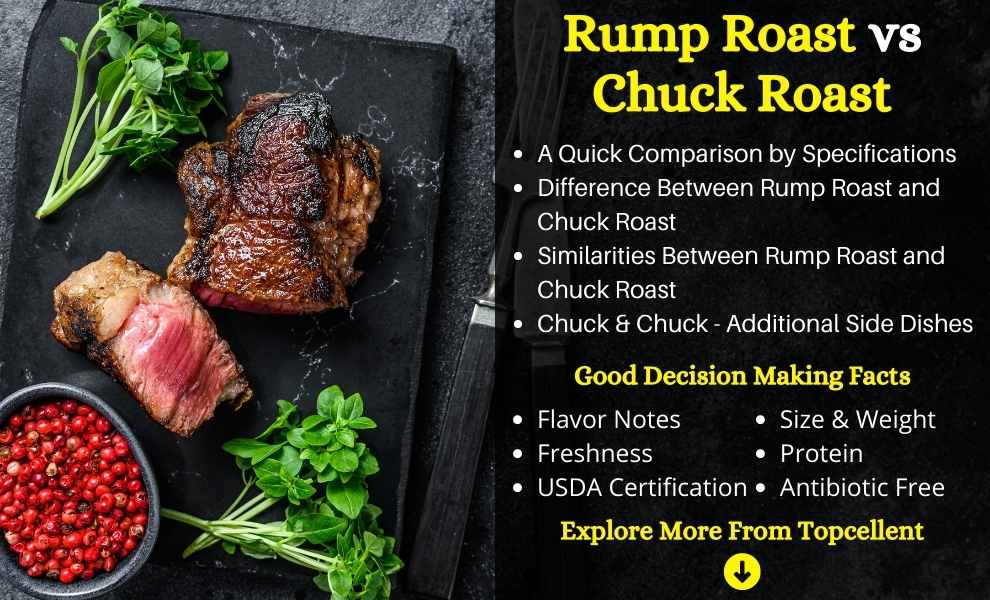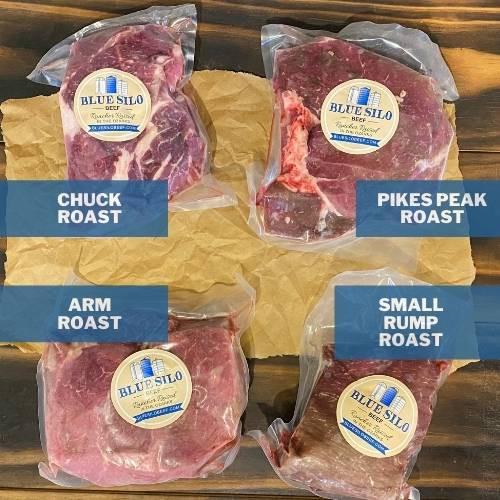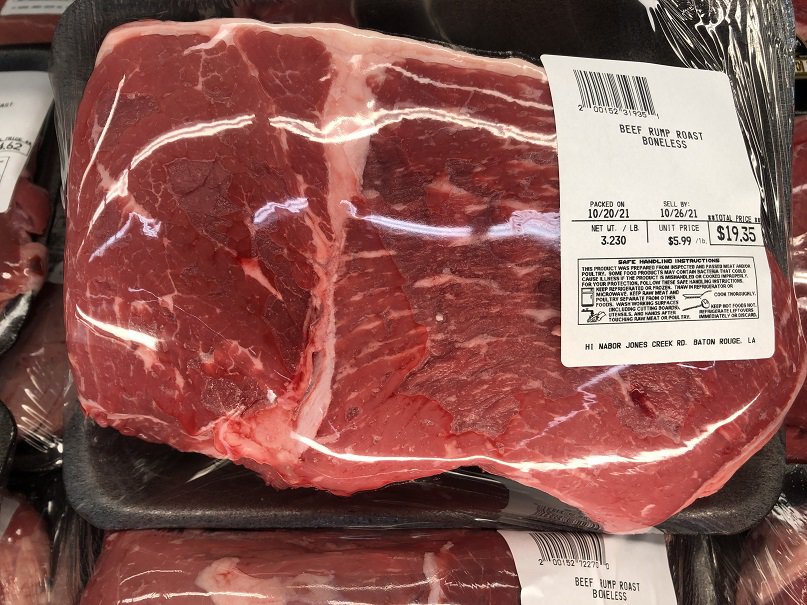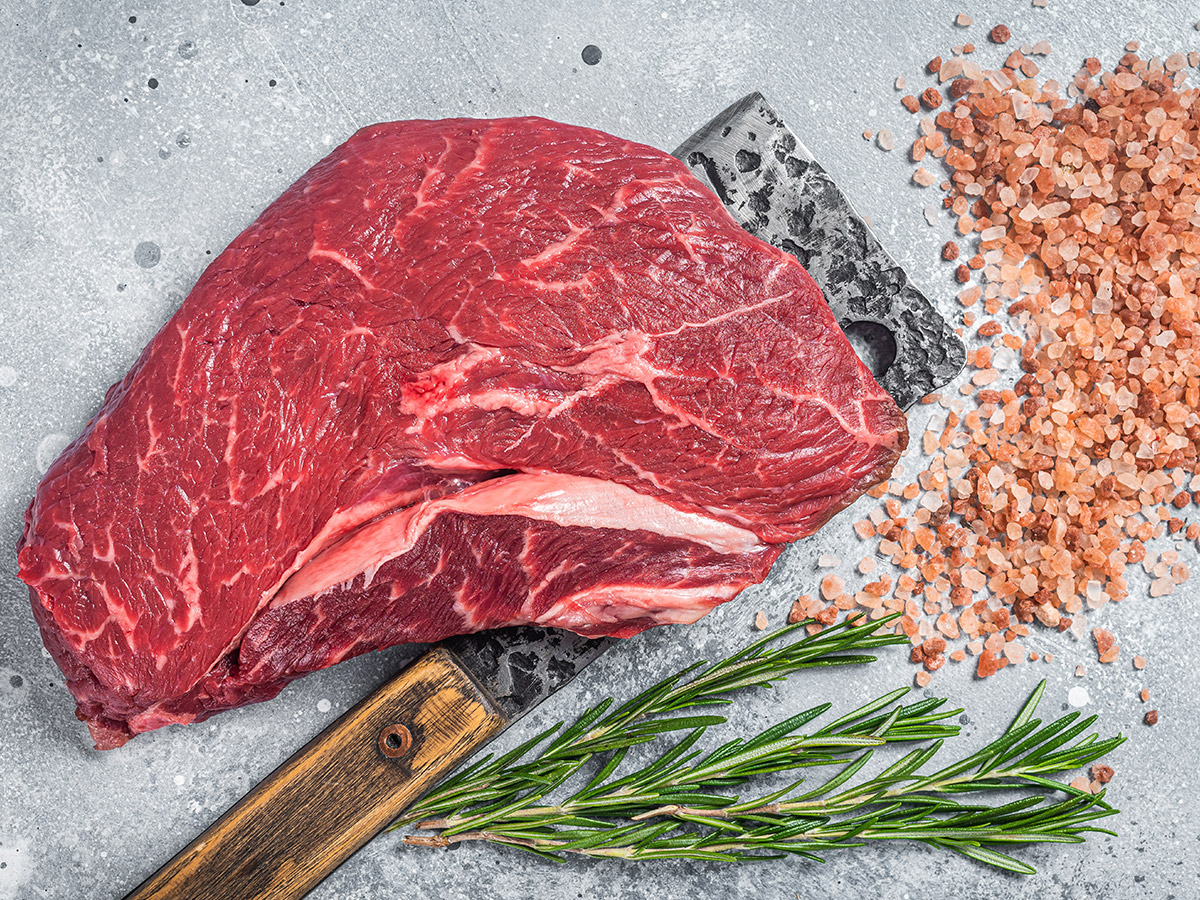Introduction

When it comes to choosing the perfect beef roast, there are numerous options available, each with its own distinctive flavor and texture. Two popular choices among meat lovers are rump roast and chuck roast. While they may seem similar at first glance, there are significant differences that can impact your cooking method and overall dining experience. In this article, we will explore the contrasting characteristics of rump roast and chuck roast, including their cut, texture, flavor profile, cooking methods, nutritional value, and more. By the end, you will have a clear understanding of the qualities that set these two beef roasts apart and be better equipped to choose the ideal option for your next meal.
Overview Of Rump Roast And Chuck Roast
Rump roast and chuck roast are two distinct cuts of beef with their own unique characteristics. Rump roast is taken from the hindquarters of the cow, while chuck roast is sourced from the shoulder portion. As both cuts come from well-used parts of the cow, they tend to be tougher in texture. However, rump roast is generally considered more tender than chuck roast. These cuts should not be confused with bottom round, as they have different qualities. It is important to understand the differences between rump roast and chuck roast to make an informed decision when choosing the right beef roast for your recipe.
Key Differences To Consider Before Choosing
Before choosing between rump roast and chuck roast, there are key differences to consider. One major difference is the fat marbling. Chuck roast tends to have more fat marbling throughout the meat, which can result in a richer flavor. Rump roast, on the other hand, is leaner with less fat. Another factor to consider is the cost. Chuck roast is typically more affordable compared to rump roast. Additionally, the cooking technique varies for each cut. Rump roast is best suited for roasting or braising, while chuck roast is ideal for slow cooking methods like pot roasting or stewing. These differences in fat content, cost, and cooking technique should be taken into account when deciding which roast to choose for your recipe.
Rump Roast

Rump roast is a popular cut of beef that comes from the hindquarters of the cow. It is often confused with bottom round, but they are not the same. Rump roast has a firm texture and is known for its tenderness. It has less fat marbling compared to chuck roast, resulting in a leaner meat. Rump roast offers a rich and beefy flavor, making it a favorite for roasting or braising. It is a versatile cut that can be cooked to your desired level of doneness, whether it’s medium-rare or well-done.
Rump Roast: Cut, Texture, And Flavor Profile
Rump roast is a cut of beef that comes from the hindquarters of the cow. It is known for its firm texture and tenderness. With less fat marbling compared to chuck roast, rump roast is a leaner option. This cut offers a rich and beefy flavor that is perfect for roasting or braising. Whether you prefer it cooked to medium-rare or well-done, rump roast delivers a satisfying taste. Its versatility allows it to be used in various dishes, providing a delicious and tender beef experience.
Best Cooking Methods For Rump Roast
Rump roast is best cooked using slow and moist heat methods to ensure its tenderness and flavor. One popular method is to roast it in the oven at a low temperature, around 275°F (135°C), for several hours until it reaches the desired doneness. Another option is to braise the rump roast by searing it first and then simmering it in a flavorful liquid, such as beef broth or red wine, for a few hours. This helps to break down the connective tissues and make the meat tender. Additionally, using a slow cooker or pressure cooker can also yield excellent results with rump roast.
Chuck Roast

Chuck Roast, also known as chuck-eye roast or chuck steak, is a cut of beef that comes from the shoulder portion of the cow. It is well-marbled with fat and has a rich, beefy flavor. Chuck roast is generally less expensive than rump roast and is known for its tenderness when cooked properly. It is best suited for slow cooking methods such as braising, stewing, or pot roasting. These methods help break down the connective tissues in the meat, resulting in a tender and flavorful roast. Chuck roast is popular for comfort food dishes like pot roast or beef stew.
Chuck Roast: Marbling, Tenderness, And Taste
Chuck Roast is known for its generous marbling, which refers to the streaks of fat running through the meat. This marbling helps to enhance the flavor, juiciness, and tenderness of the roast. The fat melts as it cooks, infusing the meat with moisture and adding richness to the taste. The connective tissues in Chuck Roast break down during slow cooking methods, resulting in a tender and succulent roast. The robust and beefy flavor of Chuck Roast makes it a popular choice for comforting dishes like pot roast and beef stew.
Recommended Ways To Cook Chuck Roast
Chuck Roast is a versatile cut of beef that can be cooked in a variety of ways to bring out its rich flavor and tenderness. One popular method is slow cooking, where the roast is simmered in liquid for several hours until it becomes tender and juicy. This can be done in a slow cooker, oven, or on the stovetop. Another option is braising, which involves searing the roast on all sides and then cooking it in a flavorful liquid until it is fork-tender. Chuck Roast can also be roasted at a low temperature in the oven, resulting in a deliciously caramelized exterior and moist interior. Whichever method you choose, be sure to season the roast with herbs, spices, and aromatics to enhance its flavor.
Nutritional Value

When it comes to nutritional value, there are some differences between Rump Roast and Chuck Roast. Rump Roast is classified as extra lean, containing approximately 139 calories per 3 oz. serving. It is also a good source of protein and provides essential nutrients such as iron and B vitamins. On the other hand, Chuck Roast is classified as lean and contains around 147 calories per 3 oz. serving. It is also a good source of protein, iron, zinc, and vitamin B12. Both cuts can be incorporated into a balanced diet to meet your nutritional needs.
Comparison Of Nutritional Content In Rump Roast And Chuck Roast
Rump Roast and Chuck Roast have some differences in their nutritional content. Rump Roast is classified as extra lean, with approximately 139 calories per 3 oz. serving. It is a good source of protein, iron, and B vitamins. On the other hand, Chuck Roast is considered lean and contains around 147 calories per 3 oz. serving. It is also high in protein and provides essential nutrients such as iron, zinc, and vitamin B12. Both cuts offer valuable nutritional benefits and can be incorporated into a balanced diet.
Health Benefits And Considerations
Rump Roast and Chuck Roast provide various health benefits. Both cuts are excellent sources of protein, essential for muscle development and repair. They also contain important nutrients such as iron, zinc, and B vitamins, which support energy production and a healthy immune system. However, it is important to consider the fat content of these cuts. While Rump Roast is classified as extra lean, Chuck Roast is leaner but still contains slightly more fat. Therefore, individuals seeking a lower-fat option may prefer Rump Roast. Additionally, moderation is key when consuming red meat as part of a well-balanced diet.
Flavor And Texture

Flavor and texture play a crucial role in determining the overall eating experience of beef roasts. Rump roast offers a leaner texture, with less marbling and a firmer bite. Its flavor is robust and beefy, making it a favorite for those who enjoy a distinct taste. On the other hand, chuck roast boasts more marbling, resulting in a tender and succulent texture. The marbling enhances the richness of its flavor, making it ideal for slow-cooking methods. Overall, the contrasting flavors and textures of rump roast and chuck roast provide options for different culinary preferences.
Contrasting Flavors And Textures Of Rump Roast And Chuck Roast
Rump roast and chuck roast offer contrasting flavors and textures that cater to different tastes and cooking preferences. Rump roast has a leaner texture with less marbling, resulting in a firmer bite. Its flavor is robust and beefy, providing a distinct and intense taste. On the other hand, chuck roast boasts more marbling, delivering a tender and succulent texture. The marbling enhances its flavor, adding richness and depth to the meat. Whether you prefer a leaner and firm texture or a tender and juicy bite, both rump roast and chuck roast offer unique and delicious options for your culinary endeavors.
Tips For Enhancing Taste And Tenderness
To enhance the taste and tenderness of both rump roast and chuck roast, there are a few key tips to keep in mind.
- Marinating: Marinating the roast before cooking can add flavor and help tenderize the meat. Choose a marinade with acidic ingredients like vinegar or citrus juices to break down the tough fibers.
- Slow-cooking: Both roasts benefit from slow cooking methods such as braising or using a slow cooker. This allows the meat to become tender and juicy, resulting in a melt-in-your-mouth texture.
- Seasoning: Be generous with seasoning to enhance the flavor. Use a combination of herbs, spices, and your favorite seasonings to create a delicious crust or gravy.
- Resting: After cooking, allow the roast to rest for a few minutes before slicing. This allows the juices to redistribute throughout the meat, resulting in a more flavorful and tender final product.
By following these tips, you can elevate the taste and tenderness of your rump roast and chuck roast, creating a memorable dining experience.
Conclusion

In conclusion, choosing between rump roast and chuck roast depends on your cooking preferences and desired flavor. Rump roast offers a leaner texture and a pronounced beefy taste, making it perfect for roasting. On the other hand, chuck roast has more marbling and a richer flavor, making it ideal for slow cooking methods like braising or stewing. Both cuts can be tender and delicious when cooked properly. Consider the specific recipe and cooking method you plan to use to make the best choice between rump roast and chuck roast.
Final Thoughts On Choosing Between Rump Roast And Chuck Roast
In conclusion, the choice between rump roast and chuck roast ultimately comes down to personal preference and the desired cooking method. Rump roast offers a leaner texture and a pronounced beefy taste, making it perfect for roasting. On the other hand, chuck roast has more marbling and a richer flavor, making it ideal for slow cooking methods like braising or stewing. Both cuts can be tender and delicious when cooked properly. Consider the specific recipe and cooking method you plan to use to make the best choice between rump roast and chuck roast.
Recipe Ideas And Serving Suggestions
When it comes to recipe ideas and serving suggestions for rump roast and chuck roast, the possibilities are endless. For rump roast, consider seasoning it with a blend of herbs and spices, then roasting it to perfection. Serve it thinly sliced with your favorite gravy or au jus on the side. As for chuck roast, try braising it with onions, carrots, and potatoes for a comforting pot roast. The tender meat and flavorful vegetables make for a hearty and satisfying meal. Don’t forget to pair your roast with your favorite side dishes like mashed potatoes, roasted vegetables, or a fresh salad.
FAQ About Rump Roast Vs Chuck Roast: Contrasting Beef Roasts
Q: What are the main differences between Rump Roast and Chuck Roast?
A: The main differences lie in the location of the cuts on the cow and the tenderness of the meat. Rump Roast comes from the backside of the cow, which tends to be leaner and less tender compared to Chuck Roast, which comes from the shoulder area and is usually more marbled and flavorful.
Q: How should Rump Roast and Chuck Roast be cooked?
A: Rump Roast is best cooked using slow, moist heat methods like braising to break down the toughness, while Chuck Roast can be cooked using both dry heat methods like roasting or moist heat methods, making it a versatile cut for various cooking techniques.
Q: Which cut is more budget-friendly, Rump Roast or Chuck Roast?
A: Chuck Roast is usually more budget-friendly compared to Rump Roast because it comes from a more worked muscle area, making it a cost-effective option for those looking to cook delicious yet economical meals.
Q: Are there any specific recipes that work better for Rump Roast or Chuck Roast?
A: Rump Roast is ideal for dishes like pot roast or stews that require long, slow cooking to tenderize the meat, while Chuck Roast is great for dishes like braised beef, beef stew, or even as a pot roast. The marbling in Chuck Roast adds flavor and moisture to the dish.
Q: Can Rump Roast and Chuck Roast be interchanged in recipes?
A: While both cuts can be used interchangeably in some recipes that call for beef roasts, the cooking method and time may need to be adjusted due to the differences in tenderness and fat content. It’s recommended to follow a recipe specifically tailored to the cut of meat you are using for the best results.
Q: Which cut is better for those looking for a leaner option?
A: If you’re looking for a leaner option, Rump Roast might be a better choice as it tends to have less marbling and fat content compared to Chuck Roast. However, keep in mind that leaner cuts may require more attention during cooking to prevent them from becoming dry.

Stutts House of Barbecue is a haven for BBQ enthusiasts, offering a delectable array of smoked delicacies, including ribs, beef, bologna, and chicken, accompanied by all the trimmings you could ever dream of. Our passion for perfecting the art of smoking meats shines through in every savoury bite. At Stutts House of Barbecue, we take pride in our custom smoking techniques, ensuring that each piece of meat is infused with the perfect blend of smoky flavours. But it doesn’t stop there – our homemade desserts are the cherry on top of a delicious meal, adding a sweet finish to your BBQ experience.